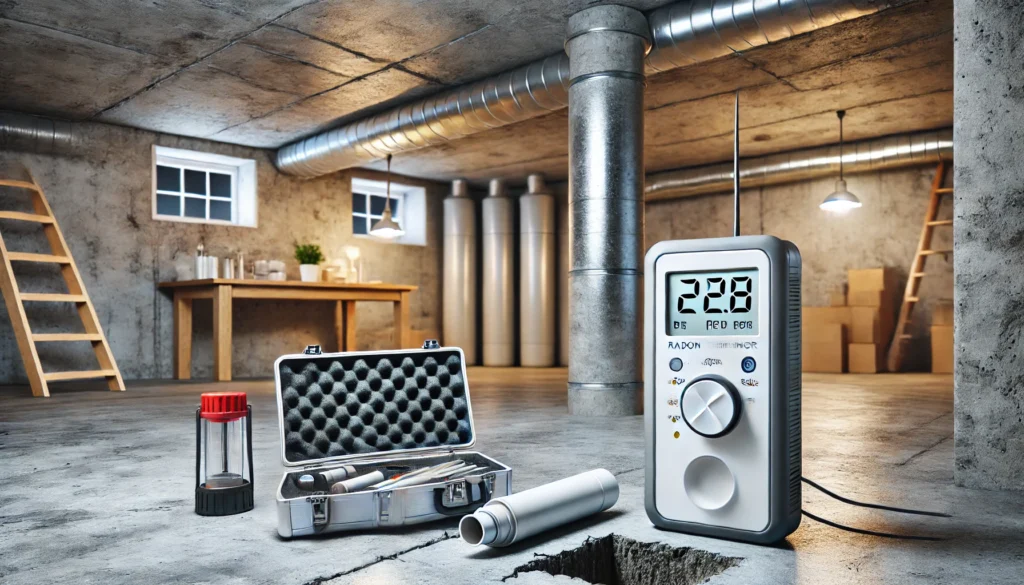What Is Considered a High Level of Radon?
If your radon test kit shows numbers like 4.0 pCi/L, 6.7 pCi/L, or higher, you might be asking yourself:
“Is this dangerous?”
“Do I need to leave my house?”
“What should I do now?”
You’re not alone—and you’re not powerless.
A high level of radon isn’t something to ignore, but it’s very manageable with the right steps.
| Radon Level | Meaning |
|---|---|
| 0.0 – 1.9 pCi/L | Low risk |
| 2.0 – 3.9 pCi/L | Moderate risk — consider monitoring |
| 4.0+ pCi/L | High level of radon — take action now |
The EPA recommends mitigation at levels 4.0 pCi/L or higher, and even lower levels can be a concern over long-term exposure—especially in homes with children, elderly family members, or smokers.
Why Is a High Level of Radon Dangerous?
Radon is an odorless, invisible gas that naturally forms in the ground. It seeps into homes through foundations, crawlspaces, and basement floors.
When trapped indoors, radon builds up—and breathing it over time increases your risk of lung cancer. In fact, radon is the second leading cause of lung cancer in the U.S., right after smoking.
You’re at even greater risk if:
- You spend a lot of time in a basement or lower level
- You’re a smoker or live with one
- Your home is well-sealed or poorly ventilated
- You plan to stay in your home for many years
A high level of radon isn’t something you’ll smell or feel, but the long-term impact on your lungs is real.
What Should You Do if Your Radon Test Shows a High Level?
Step 1: Don’t Panic
Radon exposure becomes dangerous over time, not overnight. You don’t need to move out today—but you should take action soon.
Step 2: Confirm the Results
Radon levels can vary depending on weather, airflow, and where the test kit was placed.
You have two options:
- Use a long-term test kit to get a more accurate average
- Call a certified professional like EnviroPro 360 to perform precision testing with calibrated digital monitors
At EnviroPro 360, we test multiple areas of your home and give you a clear, accurate reading you can trust.
What Happens After You Confirm a High Radon Level?
Once you’ve verified the problem, you’ll want to explore radon mitigation—a process that safely reduces radon levels in your home.
How Does Radon Mitigation Work?
A standard radon mitigation system:
- Uses a vent pipe to redirect radon from beneath your home
- Includes a quiet fan that runs 24/7
- Vents the gas safely above your roofline
- Is typically installed in your basement or crawlspace
These systems can reduce radon levels by up to 99%, are relatively affordable, and require little to no maintenance.
Why You Should Call a Radon Professional
Handling a high level of radon isn’t a DIY job—it takes proper tools, testing, and expertise.
Here’s why EnviroPro 360 is the smart choice for homeowners in Georgia and South Carolina:
- Certified Radon Testing – We use calibrated, high-accuracy equipment
- No Guesswork – You get clear answers, not vague results
- Trusted Expertise – We hold industry certifications (IAC2, OSHA, AIHA, IAQA)
- Clear Guidance – If mitigation is needed, we explain your next steps and refer reliable contractors
- Local Service You Can Trust – Serving homes and businesses across Augusta, Columbia, and the surrounding areas
High Radon FAQs: What Homeowners Want to Know
Q: Can high radon levels go down on their own?
A: Not usually. Without ventilation or mitigation, radon will continue to build up indoors—especially during colder months.
Q: How much does mitigation cost?
A: Most systems cost starts at $800, but final the cost depends on your home layout. We’ll help you understand what’s needed.
Q: Is high radon more common in basements?
A: Yes. Radon comes from the ground, so lower levels tend to have the highest concentrations.
Q: Can new homes have high radon too?
A: Absolutely. Radon has nothing to do with a home’s age—it’s all about the soil beneath it.
Get Peace of Mind with Professional Radon Testing from EnviroPro 360
A high level of radon isn’t the end of the world—but ignoring it isn’t worth the risk. Whether you’ve already tested your home or are just starting, EnviroPro 360 is here to help.
We offer:
- Certified radon testing
- Air quality reports you can trust
- Local service backed by 20+ years of experience
📍 Serving homeowners across Georgia and South Carolina
📞 Schedule your test today and protect your family for the long run


